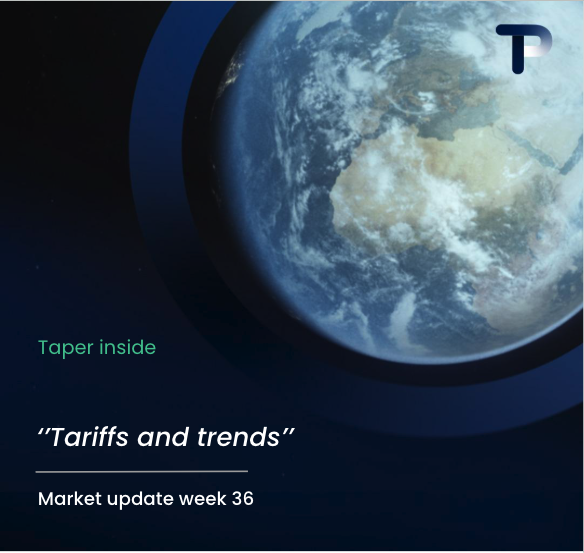Trade finance solutions reduce payment costs by eliminating intermediary banking fees, offering competitive foreign exchange rates, and providing multi-currency accounts that streamline cross-border transactions. These financial tools help businesses avoid multiple currency conversions, reduce correspondent banking charges, and consolidate payment processes into efficient, cost-effective systems designed specifically for international trade operations.
Understanding trade finance solutions and their cost-saving potential
Trade finance solutions are specialised financial instruments designed to facilitate international business transactions whilst minimising operational expenses. These tools address the complex challenges businesses face when conducting cross-border trade, including high banking fees, unfavourable exchange rates, and lengthy processing times.
The connection between trade finance mechanisms and reduced operational expenses lies in their ability to streamline payment processes. Traditional banking methods often involve multiple intermediaries, each adding their own fees and processing delays. Trade finance solutions bypass many of these costly steps by providing direct access to international payment networks and competitive currency exchange services.
Modern trade finance platforms offer integrated solutions that combine payment processing, currency exchange, and account management into a single system. This consolidation eliminates the need for businesses to maintain relationships with multiple financial institutions, reducing both administrative burden and associated costs.
The cost-saving potential becomes particularly significant for businesses conducting regular international transactions. Rather than paying individual fees for each service component, companies can access comprehensive packages that offer better value through economies of scale and streamlined operations.
What are the main ways trade finance solutions reduce payment costs?
Trade finance solutions reduce payment costs through several key mechanisms that directly address the expensive components of international transactions. The most significant savings come from eliminating unnecessary intermediary fees and providing transparent pricing structures.
Foreign exchange fee reduction represents one of the primary cost-saving areas. Traditional banks often apply wide spreads between buying and selling rates, effectively charging hidden fees within the exchange rate. Trade finance solutions typically offer more competitive rates closer to interbank levels, resulting in substantial savings on currency conversions.
Elimination of correspondent banking charges provides another major benefit. When banks process international payments through their correspondent networks, each institution in the chain may deduct fees. Trade finance platforms often have direct relationships with international payment networks, reducing or eliminating these intermediary charges.
Streamlined processing costs contribute to overall savings by reducing the time and resources required to complete transactions. Automated systems replace manual processes, reducing operational costs that traditional banks pass on to customers through higher fees.
| Cost Reduction Area | Traditional Banking | Trade Finance Solutions |
|---|---|---|
| Foreign Exchange Spreads | 2-4% margin | 0.5-1.5% margin |
| Intermediary Fees | Multiple charges | Reduced or eliminated |
| Processing Time | 3-5 business days | Same day to 24 hours |
| Account Maintenance | Monthly fees per currency | Consolidated pricing |
How do multi-currency accounts help businesses save on international payment costs?
Multi-currency IBAN accounts significantly reduce international payment costs by allowing businesses to hold and manage multiple currencies within a single account structure. This eliminates the need for frequent currency conversions and reduces exposure to unfavourable exchange rates.
The primary cost-saving benefit comes from eliminating unnecessary currency conversion fees. When businesses receive payments in foreign currencies, traditional single-currency accounts automatically convert funds at the bank’s exchange rate. Multi-currency accounts allow companies to hold funds in their original currency until conversion becomes strategically advantageous.
Reduced correspondent banking charges represent another significant advantage. Multi-currency accounts often provide local IBAN details for major currencies, meaning payments appear as domestic transactions to the sender. This reduces the fees typically associated with international wire transfers.
Simplified payment processing through multi-currency accounts also reduces administrative costs. Rather than managing multiple banking relationships across different countries, businesses can consolidate their international banking needs into a single platform. This reduces the time and resources spent on account management, reconciliation, and reporting.
The ability to time currency conversions strategically provides additional cost benefits. Businesses can monitor exchange rates and convert currencies when conditions are most favourable, rather than being forced to accept whatever rate is available when payments are received.
Key takeaways for reducing payment costs with trade finance solutions
The most effective cost-saving strategies through trade finance solutions focus on consolidation and strategic timing. Businesses achieve the greatest savings by centralising their international payment operations and taking advantage of competitive exchange rates and reduced intermediary fees.
Practical implementation begins with evaluating your current international payment volumes and associated costs. Companies conducting regular cross-border transactions typically see the most significant benefits from switching to specialised trade finance solutions. The savings often justify any transition costs within the initial months of use.
Long-term benefits extend beyond immediate cost reductions. Trade finance solutions provide greater transparency in pricing, allowing businesses to budget more accurately for international operations. The improved cash flow from faster processing times and the ability to hold multiple currencies strategically can provide additional financial advantages.
Consider partnering with providers that offer comprehensive solutions including multi-currency accounts, competitive exchange rates, and transparent fee structures. The combination of these services typically provides the most substantial cost reductions compared to traditional banking relationships.
For businesses serious about optimising their international payment costs, we at TaperPay offer specialised trade finance solutions designed specifically for companies engaged in global trade. Our integrated approach to international payments, currency management, and trade financing can help you achieve significant cost savings whilst simplifying your financial operations.
Frequently Asked Questions
How much can my business realistically save by switching to trade finance solutions?
Savings typically range from 30-60% on international payment costs, depending on your transaction volume and current banking arrangements. Businesses processing over £50,000 monthly in international payments often see savings of £500-2,000 per month through reduced FX spreads, eliminated intermediary fees, and faster processing times.
What's the minimum transaction volume needed to make trade finance solutions cost-effective?
Most businesses benefit from trade finance solutions when processing at least £10,000-20,000 monthly in international payments. However, even smaller volumes can be cost-effective if you're currently paying high traditional banking fees or need multi-currency capabilities for strategic cash flow management.
How do I transition from traditional banking to trade finance solutions without disrupting operations?
Start by running both systems in parallel for 1-2 months, beginning with less critical transactions to test the new platform. Gradually migrate larger payments once you're comfortable with the process. Most providers offer dedicated onboarding support and can help coordinate the transition to minimise operational disruption.
Are there hidden fees I should watch out for when choosing trade finance providers?
Look for transparent fee structures that clearly outline FX margins, transfer fees, and monthly account charges. Avoid providers with unclear pricing, high minimum fees, or those who don't disclose their exchange rate margins upfront. Reputable providers will provide detailed cost breakdowns before you commit.
Can I still access traditional banking services while using trade finance solutions?
Yes, most businesses maintain their existing banking relationships for domestic operations while using trade finance solutions specifically for international payments. This hybrid approach allows you to optimise costs for cross-border transactions whilst keeping familiar banking services for local needs.
What happens if exchange rates move against me while holding multiple currencies?
Multi-currency accounts give you flexibility to time conversions strategically, but they don't eliminate currency risk entirely. Consider using forward contracts or currency hedging tools offered by many trade finance providers to lock in favourable rates for future transactions and protect against adverse movements.
How quickly can I expect to see cost savings after implementing trade finance solutions?
Most businesses see immediate savings on their first transactions through better exchange rates and reduced fees. However, the full benefit becomes apparent within 2-3 months as you optimise currency timing, reduce administrative overhead, and take advantage of volume-based pricing improvements.
Hi there! 👋 I see you're reading about multi-currency IBAN accounts for supply chain payments. Smart choice - these accounts can save businesses 2-4% on every international transaction!
What best describes your current situation with international supplier payments?
Which of these challenges are you currently facing with international payments? (Select all that apply)
What's driving your interest in multi-currency payment solutions? Tell us about your business goals or challenges.
Great! To help us understand your specific needs better, could you share more details about your international payment volume or any particular requirements?
Perfect! Let's connect you with one of our international payments specialists who can show you exactly how Taper's multi-currency IBAN accounts can save you money and streamline your supply chain payments.



